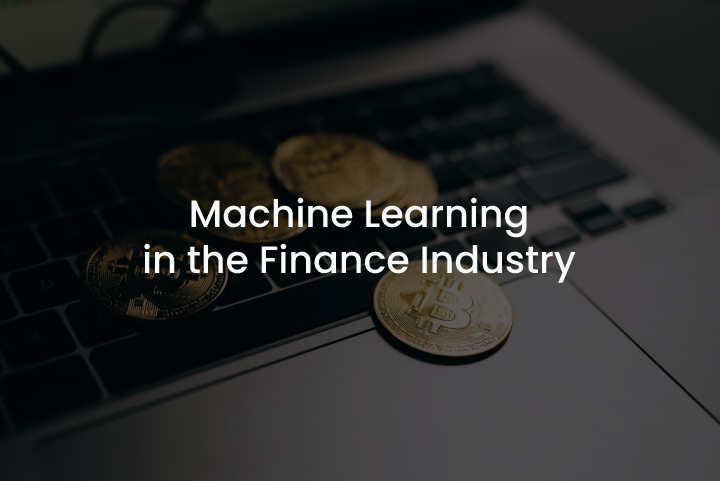Implementing Data Analysis for Operational Optimization and Increased Business Performance
Businesses today have access to more data than ever before, from customer transactions and interactions to operational metrics and financial …
 07 | 12 | 2022
07 | 12 | 2022 Financial sector organizations are the ones that operate with large scopes of data which require using advanced technologies to process them. Having constant access to these data allows for creating accurate analytics and forecasts on how the financial market behaves and how it may change, optimizing documentation flow, etc.
For the past 20 years, Machine Learning has been a driving force behind financial institutions. The adoption of ML defines the future of the industry and has significantly reduced the timing for producing analytical papers and reports as opposed to the human agent preparing them. Besides optimization of the processes within organizations, ML improves user experience and helps businesses keep up with the latest trends in the world of financial services. Being extremely vibrant, the financial market is a place for success for those who manage to quickly adapt to all the transformations.
ML utilizes algorithms that enhance training. The experts single out four major types of ML that help boost the systems where they are used. These are Supervised learning, Unsupervised learning, Semi-supervised learning, and Reinforcement learning.
To be able to properly process large scopes of data, financial institutions invest in training ML algorithms so that they produce results. The benefits of applying ML are incredible as the finance industry leverages its operations. From trading to banking, institutions heavily rely on the accuracy of the produced data. So, we are taking a look at the key advantages ML has to offer for financial services
Hiring more staff and managing and training them is one of the most expensive aspects of any business. Operational costs also take up a lot of a company’s profit. In order to reduce these costs, especially in a constantly growing business, owners prefer the automation of multiple processes.
Machine Learning allows the automation of a lot of processes, therefore, avoiding unsustainable practices and cutting expenses where necessary. In finance, human error is also a huge liability, and any mistake can come at a huge cost. Moreover, the software can provide unbiased results which also helps to avoid financial losses.
Financial institutions that handle client assets are expected to envisage any significant changes in the finance market so that their clients are protected from potential risks to their funds. Staying up to date with industry changes is what helps business owners make the best financial decisions. To maximize their clients’ asset performance, therefore, gain benefits, financial organizations get to work with the most valuable asset – information. With the help of ML, they get to foresee market transformations to provide the best financial advice.
The security of assets is one of the core aspects of the finance industry. Of course, financial institutions utilize different systems to detect any data breaches, yet these have been inevitable since the fraudsters learn their ways to pass the security systems.
Machine Learning has become a perfect solution to not only detect fraudulent activity but also foresee and prevent it. With access to tons of client data, banks must be able to track users’ activity, analyze it and tackle any suspicious one. ML algorithms now can immediately see, notify, and even block transactions if there is any danger of data breach eventually leading to financial loss.

Financial organizations still encounter several major drawbacks when using ML in their operations. The need for support teams to help fix the ongoing issues with the systems where ML is integrated has not gone anywhere.
As ML in finance makes decisions based on algorithms, we shall not eliminate human factors as a reaction to it. For example, a bank client decides to question the decision of the bank in refusing a loan. Since the decision was made by the ML algorithm based on multiple factors, the employees have to review it and then provide a justified explanation to the client. Therefore, data scientists behind the ML algorithms deal with extremely complex systems and proper training is a must-have. Unfortunately, the appropriate level of training is usually gained through working experience, trials, and errors. That is why hiring qualified teams are crucial.
One of the main concerns of business owners is that ML algorithms may make a mistake that will lead to a financial loss. While training, the algorithms train to provide outcome data from the datasets they were given, and these outcome data can contain inaccurate data too. However, the algorithms are learning from their errors and next time the same mistake will not happen as the solution is already in there.
Introducing Machine Learning in the finance industry is a huge step forward in the direction of automation in the industry aiming at reducing operational costs and accelerating data processing. In addition, through training, ML algorithms can make forecasts for finance sector changes which are to protect assets and help the market thrive. ML does have its pros and cons, yet the latter is minimized owing to the constant improvement in data science.
Building a solution with ML is a key to successful data management as it helps in many ways to build strategies for further development and growth.
READ ALSO: BUILDING A SOLUTION FOR CORPORATE PROCESSES MANAGEMENT
Businesses today have access to more data than ever before, from customer transactions and interactions to operational metrics and financial …
Conversational AI systems can engage in natural conversations and dialogue with humans. Powered by machine learning and natural language processing, …
The decision between hiring a software development company or a freelancer can be challenging for business owners who are looking …